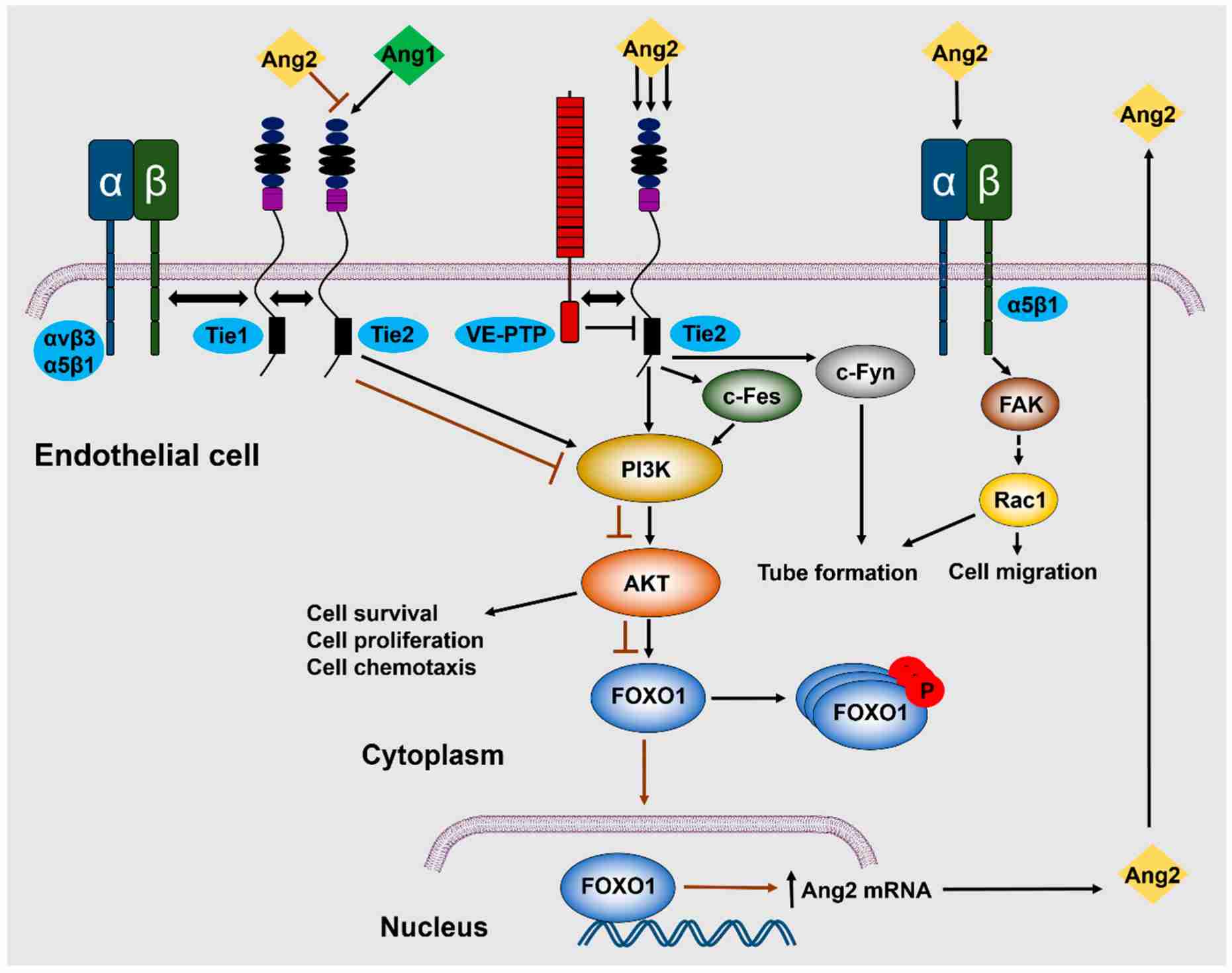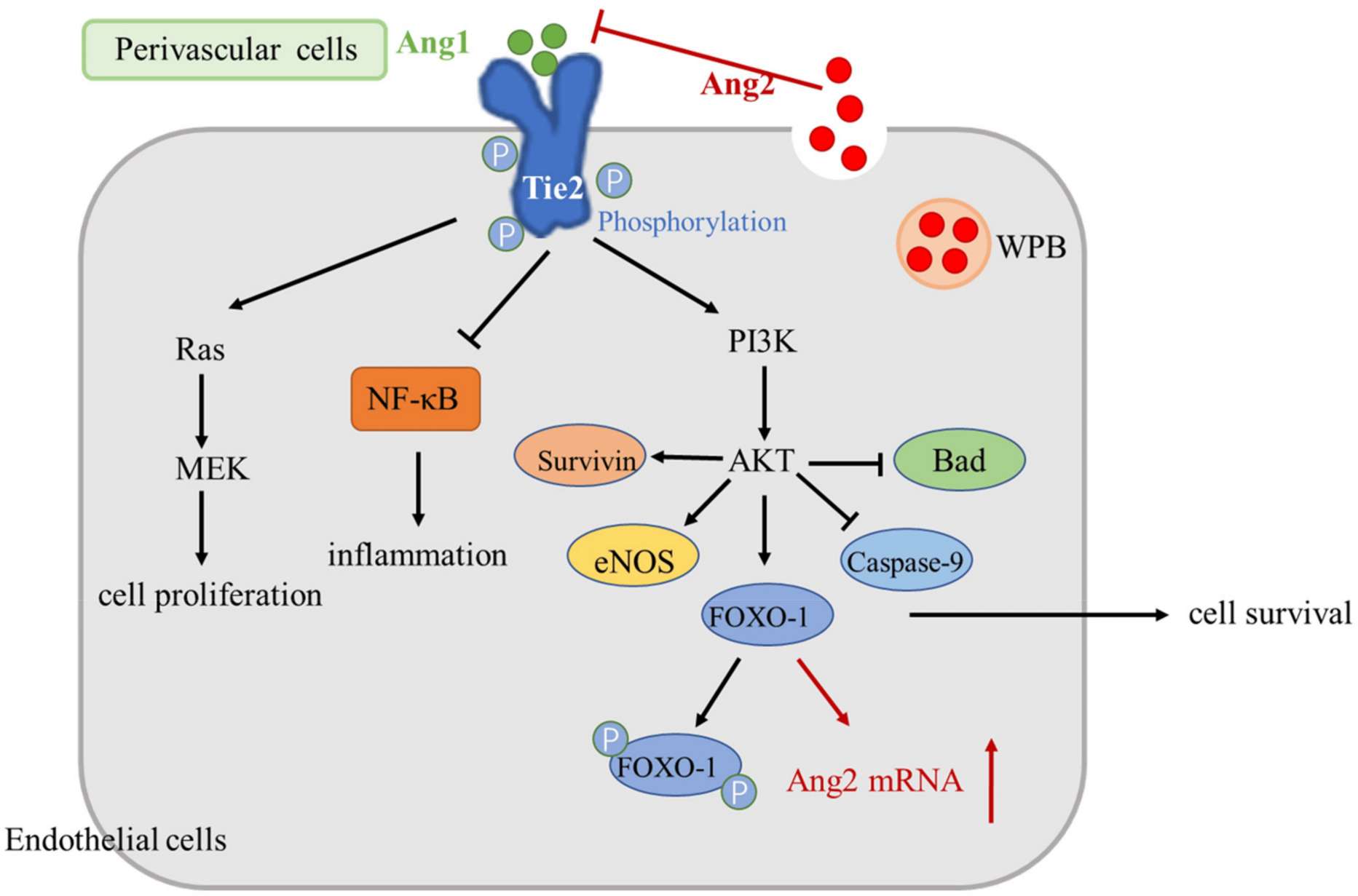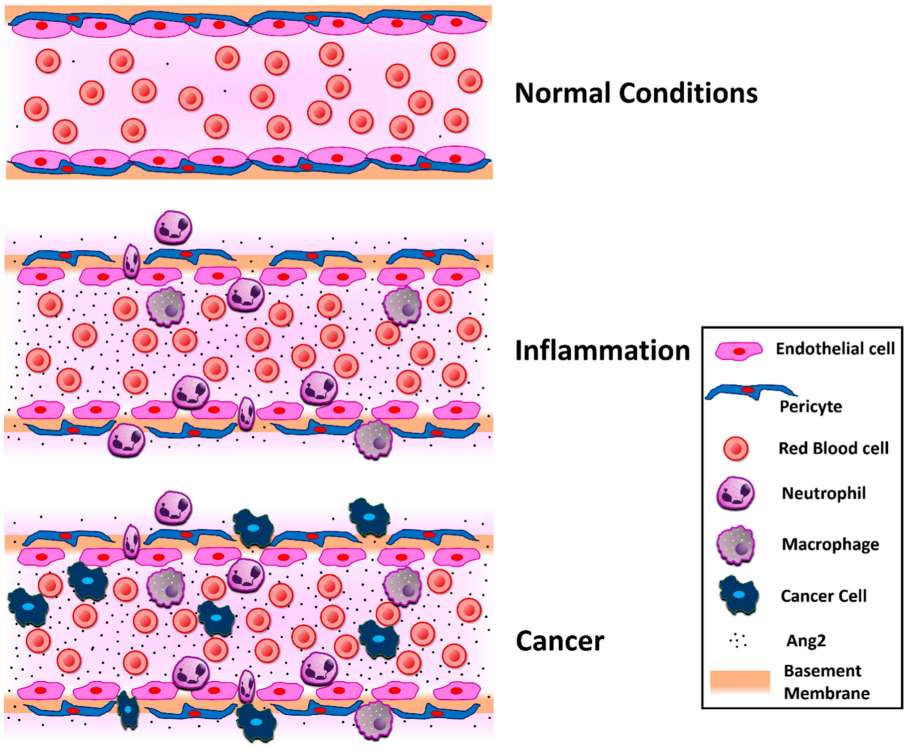Angiopoietin
Related Symbol Search List
Immunology Background
Available Resources for Angiopoietin Research
Creative BioMart is your premier destination for all your research needs related to angiopoietins. Our carefully curated selection of products and personalized services are designed to support your exploration of the intricate world of angiopoietins and their vital role in various physiological processes.
- Our product offerings include high-quality recombinant proteins, native proteins, protein pre-coupled magnetic beads, cell and tissue lysates, chromatography reagents, GMP proteins, assay kits, and others. All are meticulously tailored to meet your specific research needs with unmatched precision and expertise.
- In addition, we provide a wealth of resources on angiopoietin, including comprehensive insights on associated pathways, protein functions, interacting proteins, relevant literature, and the latest research trends.
Our Featured Products
| Cat.# | Product name | Species | Source (Host) | Tag |
|---|---|---|---|---|
| ANG-9641H | Active Recombinant Human ANG protein, His-tagged | Human | E.coli | His |
| ANGPT1-2548H | Recombinant Human ANGPT1 protein, His-tagged | Human | E.coli | His |
| ANGPT2-200H | Active Recombinant Human ANGPT2 protein, hFc-tagged | Human | HEK293 | hFc |
| Angptl2-108M | Recombinant Mouse Angptl2 Protein, His tagged | Mouse | HEK293 | N-His |
| ANGPTL3-9649H | Recombinant Human ANGPTL3, GST-tagged | Human | E.coli | GST |
| ANGPTL4-430H | Recombinant Human ANGPTL4 protein, His-tagged | Human | HEK293 | His |
| ANGPTL5-422H | Recombinant Human ANGPTL5, GST tagged | Human | Insect Cell | GST |
| ANGPTL7-01H | Recombinant Human ANGPTL7 protein, hIgG-tagged | Human | HEK293T | hIgG |
About Angiopoietin
Angiopoietins are a family of growth factors that play important roles in the regulation of blood vessel formation and maintenance, known as angiogenesis. The term "angiopoietin" refers to three related groups of proteins: Angiopoietin (Ang), Angiopoietin-like (ANGPTL), and Angiopoietin-like protein (ANGPT).
Angiopoietins (Ang)
- Angiopoietins are secreted glycoproteins that bind to the Tie-2 receptor (also known as Tek) on endothelial cells, which line the inner walls of blood vessels. The Ang family consists of four members: Angiopoietin-1 (Ang1), Angiopoietin-2 (Ang2), Angiopoietin-3 (Ang3), and Angiopoietin-4 (Ang4). Ang1 and Ang2 are the most extensively studied members of this family. They are primarily produced by pericytes, smooth muscle cells, and certain stromal cells.
- Structural Features: Angiopoietins consist of a characteristic N-terminal coiled-coil domain, followed by a linker region, a central fibrinogen-like domain, and a C-terminal domain. The fibrinogen-like domain is responsible for binding to the Tie-2 receptor. Ang1 and Ang2, in particular, have been extensively studied for their roles in angiogenesis and vascular development.
Angiopoietin-like (ANGPTL) proteins
- The ANGPTL family consists of seven members: ANGPTL1, ANGPTL2, ANGPTL3, ANGPTL4, ANGPTL5, ANGPTL6, and ANGPTL7. These proteins share structural similarities with angiopoietins but do not bind to the Tie-2 receptor. Instead, they interact with various other receptors and molecules to regulate lipid metabolism, glucose homeostasis, and inflammation. ANGPTL proteins have been implicated in metabolic disorders, cardiovascular diseases, and cancer.
- Structural Features: ANGPTL proteins generally consist of an N-terminal coiled-coil domain, followed by a linker region, a central fibrinogen-like domain (similar to angiopoietins), and a C-terminal globular domain. The globular domain of ANGPTL proteins often plays a role in interactions with other proteins, such as lipoproteins and integrins, to regulate metabolism, inflammation, and cell signaling.
Angiopoietin-like protein (ANGPT)
- ANGPT proteins are a group of secreted glycoproteins that are structurally related to angiopoietins but do not bind to Tie-2. ANGPT proteins have diverse functions, including regulation of angiogenesis, energy metabolism, and tissue development. ANGPT1, ANGPT2, ANGPT4, and ANGPT6 are members of this group. They can modulate angiogenesis indirectly by interacting with other angiogenic factors and receptors.
- Structural Features: ANGPT proteins possess a similar domain organization as angiopoietins, including an N-terminal coiled-coil domain, a linker region, a central fibrinogen-like domain, and a C-terminal domain. Despite these structural similarities, ANGPT proteins interact with other receptors or molecules to exert their functions.
Understanding the functions and regulation of angiopoietins and angiopoietin-like proteins provides insights into the complex processes of angiogenesis and vascular homeostasis. Further research on these proteins and their interactions with other angiogenic factors may contribute to the development of therapeutic strategies for angiogenesis-related diseases and the modulation of blood vessel formation and remodeling.
 Fig.1 Illustration of the main signaling pathways activated upon Ang2 binding to endothelial cells. (Akwii RG, et al., 2019)
Fig.1 Illustration of the main signaling pathways activated upon Ang2 binding to endothelial cells. (Akwii RG, et al., 2019)
Angiopoietin Signaling Pathway
The angiopoietin signaling pathway primarily involves the interaction between angiopoietin ligands (Ang1 and Ang2) and their receptor, Tie-2. Activation of the Tie-2 receptor initiates intracellular signaling cascades that regulate angiogenesis, vascular stability, and endothelial cell function. Here is an overview of the angiopoietin signaling pathway:
Ligand Binding
- Angiopoietin ligands, particularly Ang1 and Ang2, bind to the extracellular domain of the Tie-2 receptor. Ang1 acts as an agonist, while Ang2 can act as both an agonist and antagonist depending on the context.
Receptor Activation
- Binding of Ang1 or Ang2 to Tie-2 promotes receptor dimerization and autophosphorylation of specific tyrosine residues within the intracellular domain of Tie-2. This autophosphorylation is a key step in initiating downstream signaling events.
Activation of Signaling Pathways
Activated Tie-2 receptor initiates multiple intracellular signaling pathways, including:
- PI3K/Akt Pathway: Activation of Tie-2 leads to the recruitment and activation of phosphoinositide 3-kinase (PI3K), which in turn activates Akt (protein kinase B). The PI3K/Akt pathway promotes endothelial cell survival, inhibits apoptosis, and enhances endothelial barrier function.
- MAPK/ERK Pathway: Tie-2 signaling also activates the mitogen-activated protein kinase/extracellular signal-regulated kinase (MAPK/ERK) pathway. Activation of this pathway promotes endothelial cell proliferation, migration, and angiogenesis.
- PLCγ Pathway: Tie-2 activation stimulates phospholipase C-γ (PLCγ), leading to the generation of inositol trisphosphate (IP3) and diacylglycerol (DAG). This pathway can regulate calcium signaling and activate protein kinase C (PKC), which influences endothelial cell behavior.
Downstream Effects
The activation of these signaling pathways by Tie-2 receptor leads to various cellular responses and physiological effects, including:
- Angiogenesis: Activation of Tie-2 signaling promotes angiogenesis, the formation of new blood vessels, by stimulating endothelial cell proliferation, migration, and sprouting.
- Vascular Stability: Tie-2 signaling plays a crucial role in vessel maturation and stability. It regulates the recruitment of pericytes and smooth muscle cells, strengthens endothelial cell-cell junctions, and maintains vascular integrity.
- Inflammation and Immune Response: Tie-2 signaling influences the immune response and inflammation. It modulates leukocyte-endothelial cell interactions, regulates cytokine production, and suppresses inflammation in certain contexts.
The angiopoietin signaling pathway is complex and tightly regulated, and its dysregulation can contribute to various diseases, as discussed earlier. Understanding the intricate mechanisms of this pathway is important for developing targeted therapies aimed at modulating angiogenesis and vascular-related disorders.
 Fig.2 Angiopoietin signaling pathway. (Qi S, et al., 2022)
Fig.2 Angiopoietin signaling pathway. (Qi S, et al., 2022)
Role of Angiopoietin in Different Diseases
Angiopoietins, including Ang, ANGPT, and ANGPTL, are involved in various diseases due to their roles in angiogenesis, vascular homeostasis, and metabolic regulation. Here are some examples of diseases where these proteins have been implicated:
- Cancer: Ang1 and Ang2 contribute to tumor angiogenesis, a process crucial for tumor growth and metastasis. Ang1 promotes vessel maturation and stability, while Ang2 disrupts vessel integrity and enhances angiogenesis. The dysregulation of Ang1/Ang2 balance is associated with tumor progression and poor prognosis in several cancers.
- Cardiovascular Diseases: Ang1 and Ang2 play roles in cardiovascular conditions such as atherosclerosis, myocardial infarction, and heart failure. Ang1/Tie-2 signaling promotes vascular stability, while increased Ang2 expression disrupts vascular integrity, contributes to plaque destabilization, and exacerbates cardiac remodeling. Dysregulation of ANGPTL proteins has been linked to cardiovascular disorders, including atherosclerosis, coronary artery disease, and metabolic syndrome. ANGPTL2 promotes inflammation, endothelial dysfunction, and vascular remodeling, contributing to the progression of vascular diseases.
- Metabolic Disorders: ANGPTL proteins, such as ANGPTL3 and ANGPTL4, are involved in lipid metabolism and contribute to metabolic disorders like dyslipidemia and obesity. ANGPTL3 inhibits lipoprotein lipase, leading to increased plasma triglyceride and low-density lipoprotein (LDL) cholesterol levels. ANGPTL4 regulates lipid metabolism and promotes adipose tissue lipolysis.
- Ocular Diseases: Dysregulation of ANGPT1 and ANGPT2 is associated with retinal vascular diseases, including diabetic retinopathy and retinopathy of prematurity. Altered ANGPT1/Ang2 balance disrupts retinal vessel development and promotes pathological neovascularization.
- Lung Diseases: ANGPT2 plays a significant role in lung diseases such as acute lung injury, acute respiratory distress syndrome (ARDS), and pulmonary hypertension. Increased ANGPT2 expression contributes to endothelial dysfunction, pulmonary vascular leakage, and aberrant angiogenesis in these conditions.
- Inflammatory Diseases: ANGPT1 and ANGPT2 are involved in various inflammatory diseases, including sepsis, rheumatoid arthritis, and inflammatory bowel disease. Dysregulated ANGPT1/Ang2 balance affects vascular integrity, endothelial activation, and inflammatory cell recruitment, contributing to disease progression.
The roles of angiopoietin proteins in diseases are complex and context-dependent. The dysregulation of angiopoietin signaling can impact angiogenesis, vascular stability, lipid metabolism, and inflammation, all of which play critical roles in disease pathogenesis. Further research on these proteins and their interactions with specific disease mechanisms may lead to the development of targeted therapies and interventions.
 Fig.3 Schematic representation of the Ang2 effect on the vascular bed in normal conditions, inflammation, and cancer. (Akwii RG, et al., 2019)
Fig.3 Schematic representation of the Ang2 effect on the vascular bed in normal conditions, inflammation, and cancer. (Akwii RG, et al., 2019)
If you have any questions, requirements, or cooperation intentions, please feel free to contact us. We very much look forward to working with you and helping you achieve research and commercial success.
Related References
- Akwii RG, Sajib MS, Zahra FT, Mikelis CM. Role of Angiopoietin-2 in Vascular Physiology and Pathophysiology. Cells. 2019; 8(5):471.
- Thomas M, Augustin HG. The role of the Angiopoietins in Vascular Morphogenesis. Angiogenesis. 2009;12(2):125-137.
- Qi S, Deng S, Lian Z, Yu K. Novel Drugs with High Efficacy against Tumor Angiogenesis. International Journal of Molecular Sciences. 2022; 23(13):6934.
- Shuff S, Oyama Y, Walker L, Eckle T. Circadian Angiopoietin-Like-4 as a Novel Therapy in Cardiovascular Disease. Trends Mol Med. 2021;27(7):627-629.

